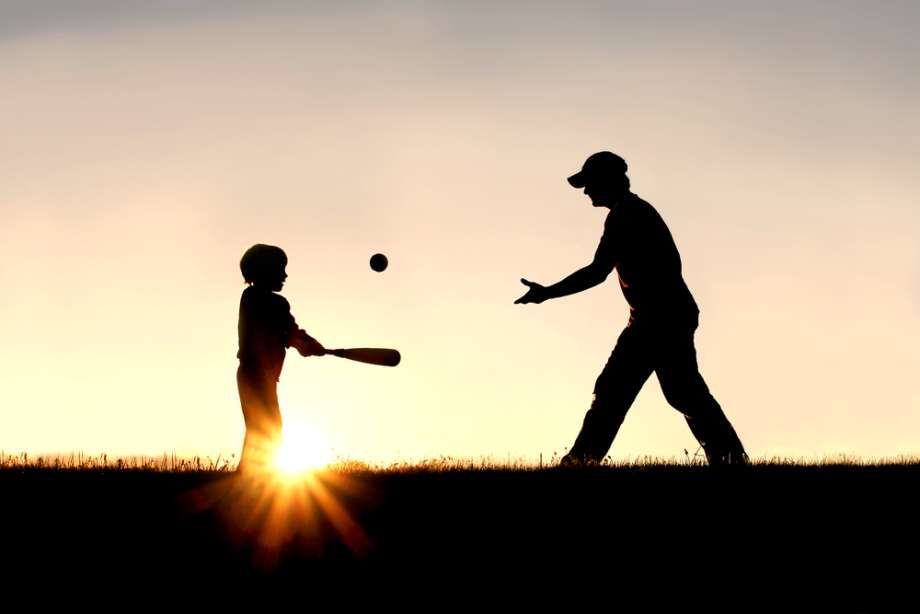Keep Calm and Parent On: Dealing with Conflict at Sporting Events

Sports offer a fun and rewarding way for kids to learn some key life lessons. From the importance of following rules and directions to the value of practice and commitment, sporting events introduce children to some of the workings of the world—often without them even knowing it. As with any enrichment activity, they’re a key piece of the development puzzle.
But they’re also a natural breeding ground for conflict. After all, the basic premise of so many sports is “me vs. you” or “us vs. them,” so it’s not totally surprising when tempers occasionally boil over on the playing field. Most of us have seen something like this happen during professional sporting events, where it’s not uncommon to see spats erupt between players—or even fans. Hockey, basketball and baseball are just a few sports where you—and your child—may see voices raised and fists flying.
But professional sporting events aren’t the only place you’re likely to see conflict. Sadly, tempers can run just as high at children’s sporting events, and as adults we have a certain responsibility to help the children resolve it fairly.
As a parent, how do you react in a situation when competition turns into conflict between kids? While it can be difficult to restrain your emotions, it’s important to take a measured approach in order to reach the best possible conclusion.
Identify the Situation
Before rushing in with your arms flailing and voice raised, take a few seconds to try to assess the conflict and ask yourself a few questions:
- Does this situation require my involvement?
- Am I going to mitigate the conflict by getting involved?
- What is my plan for handling the situation?
If there are coaches or officials on the field, you should always give them the opportunity to handle things. They’re the ones who likely have more training and experience in this area, and because they have an up-close view of the action, they probably also have a better understanding of what led to the conflict and can work to direct the resolution.
At the younger levels of sports, it may be necessary for parents to get involved to de-escalate a situation. It’s important to go in with that mindset of calming things down. You want to get the players who are fighting separated and keep things from becoming worse, and then you can begin to sort out the details.
This can all happen in a matter of seconds, so you’ve got to think before you act in order to make sure you can help resolve things. Sometimes staying out of it can prove to be the best course of action.
Discuss the Conflict Openly and Fairly
Once the initial conflict on the field is taken care of, it’s important to discuss it with the youngsters in order to reach the proper resolution. As adults, we want to find out exactly what happened and then guide the children to the appropriate outcome.
Of course, this can be easier said than done—depending on how many people are involved in the conflict and whether other parents are involved—so here are a few things to keep in mind:
- Hold your emotions in check. Parents and coaches have to be the ones to bring reason and experience to a conflict situation. If you find others being unreasonable as you’re trying to resolve it, just walk away from the players and let things settle down. Adults yelling at each other is not something that kids want to see.
- Explain what happened. After you’ve had a chance to talk to the kids involved and figure out what happened, take the time to talk it over with them and focus on what is right and wrong. Sports are a learning experience in many different ways, so we should try to help kids grow even through these types of conflicts.
- Work toward apologies. An apology is a key part of resolving the conflict and allowing the kids to move on while also feeling like they were treated fairly. If one of the children is found to be at fault, an apology is especially important. If the situation isn’t quite so clear, mutual apologies can close things out and temper the emotions that got out of control in the first place.
The key is to work toward the fairest resolution you can, understanding that your time and information are limited. Do the best you can, with the best interests of the kids in mind.
Follow up with Your Child
Just as it’s important to discuss the situation during the sporting event, it’s also critical to talk about it with your child afterward. Whether your child was directly involved in the conflict or not, he or she probably has some thoughts on it—and they may even be confused about the entire situation. Talk it through, and try to do these things:
- Get their perspective on the conflict. Everything can happen so quickly on the playing field, and it can be enlightening to hear your child’s take on the situation once he or she has had time to process things. You might learn more details than you did in the heat of the moment, and you can help your child make sense of what happened.
- Make sure their voice is heard. Especially in cases where your child was directly involved in the conflict, you want to make sure he or she feels there was “fair play” in how it was resolved. If your child doesn’t feel he or she was treated fairly, it’s important to talk about it rather than let it simmer.
- Support and educate. We all recognize the importance of supporting our children in difficult situations, and this is no different. But it’s also important to educate your child on certain topics that may be appropriate—whether it’s proper conduct, sportsmanship or listening to coaches. Just as the conflict was dealt with head-on while on the playing field, the larger issues should be addressed directly in follow-up conversations with your child.
Thankfully, major conflicts are still only an occasional interruption to youth sports. With a bit of forethought and a calm approach, we as parents can keep them from blowing up. Most importantly, we can help our kids learn from the experience and move on in a healthy way.

Adam Young is a father of two and the founder and CEO of Event Tickets Center. He shares his take on experiences, events and venues across the country to inform and inspire readers to get out and experience something new.

